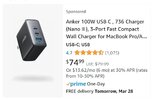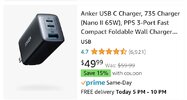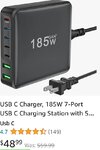thatonenerd
New Member
Hi there, is there any way to use 12v 10a current with a USB-C end? There're 240W USB-C cables, but I need the other end to be DC, or something else that already exists if it does?
Could it be possible to cut an existing cable such as the picture I have attached, & join a 240W USB-C cable end to it?
I was also told a PD- Trigger board might help? But unsure which one to get, or how I'd set that up, if it'd work for 12V 10A.

Thank you! =)
Could it be possible to cut an existing cable such as the picture I have attached, & join a 240W USB-C cable end to it?
I was also told a PD- Trigger board might help? But unsure which one to get, or how I'd set that up, if it'd work for 12V 10A.
Thank you! =)




